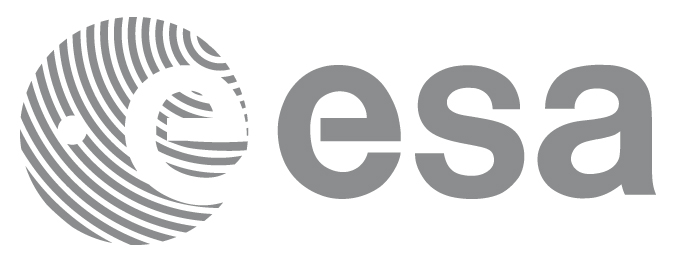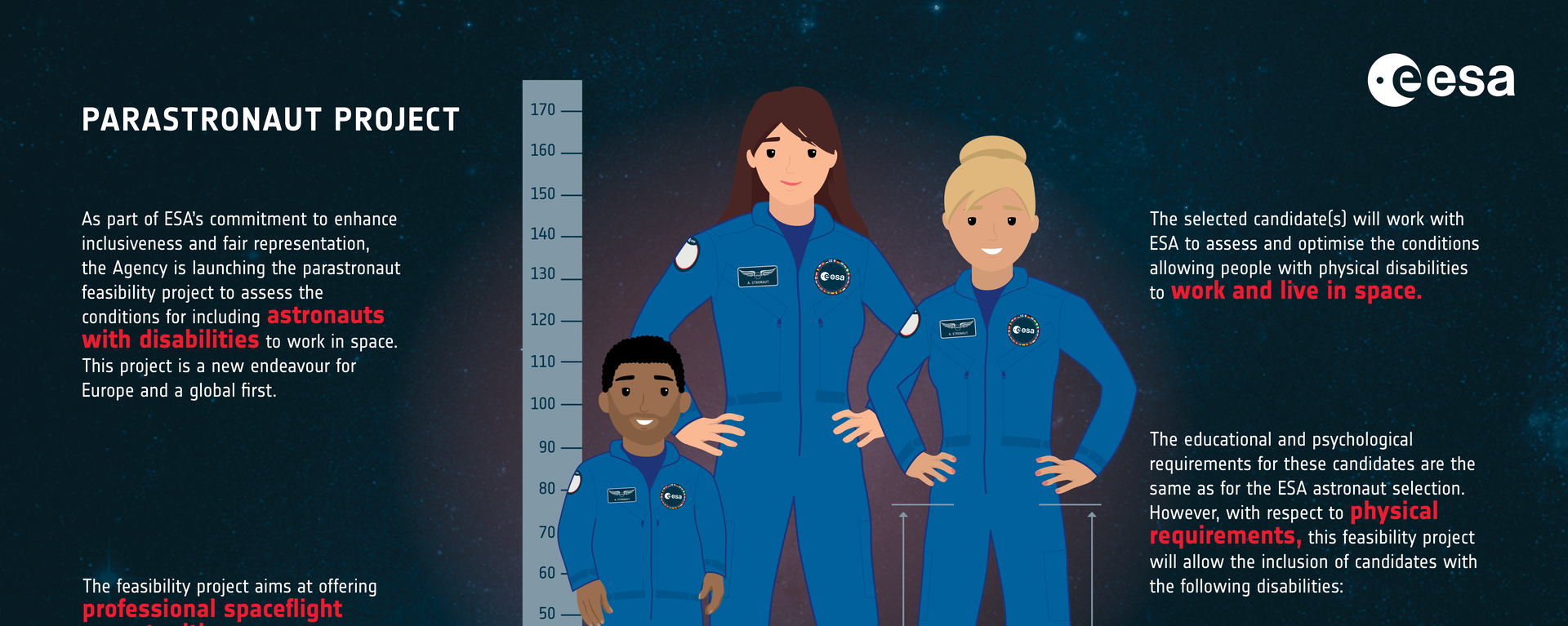As part of ESA’s commitment to enhance inclusiveness and fair representation, the Agency is launching the parastronaut feasibility project to assess the conditions for including astronauts with disabilities to work in space. This project is a new endeavour for Europe and a global first.
Because we believe that exploration is the matter of a collective effort, we need to extend the pool of talents we can rely on in order to continue progressing in our endeavour. One effective way of doing this is to include more gifted people of different genders, ages and backgrounds, but also people with special needs, people living with physical disabilities.
The feasibility project aims at offering professional spaceflight opportunities to a wider pool of talents. Starting with selected disabilities to have a thorough understanding of the potential challenges in terms of safety and operations in space, the scope of disabilities may then be extended aiming at broader inclusion.
The power of inclusion
Because physical disabilities have up until now been avoided in space, we had to start from somewhere. To do this, we looked to the expertise of the International Paralympics Committee and used the table they have developed to categorise the different kinds and degrees of impairments – especially the list of eligible impairments.
We have then done a very simple thing: we have assessed each category against our own expertise and knowledge of the prerequisites to the tasks of a safe and useful space mission. We are looking for individual(s) who are psychologically, cognitively, technically and professionally qualified to be an astronaut, but have a physical disability that would normally prevent them from being selected due to the requirements imposed by the use of current space hardware. We have then given three types of marks:
- Red: when the kind and degree of disability was not or not safely compatible with the task.
- Green: when the kind and degree of disability can be compatible with the task.
- Yellow: when the kind and degree of disability could become fully compatible with the task with some adjustments, modifications or innovations.
Two aspects are critical to us: the mission should be as safe, and as useful, as any other mission of any other professional astronaut. As part of the parastronaut feasibility project, our staff are further assessing what is needed to ensure a nominal level of individual and collective safety for such a mission. With this project we will do everything to foster these changes in cooperation with spaceflight providers and international partners.
Detailed information can be found at the Parastronaut Feasibility Project webpage. You can also read and download the Media Kit (in PDF) that includes all information and infographics for the 2021-22 ESA astronaut selection or visit the ESA Astronaut Selection website. Please note that the vacancy opening runs from 31 March to 28 May 2021 and ESA will only consider applications submitted to the ESA Career website within those eight weeks.

“Representing all parts of our society is a concern that we take very seriously. Diversity at ESA should not only address the origin, age, background or gender of our astronauts, but also perhaps physical disabilities. To make this dream a reality, alongside the astronaut recruitment I am launching the Parastronaut Feasibility Project – an innovation whose time has come.”
David Parker, ESA Director of Human and Robotic Exploration







